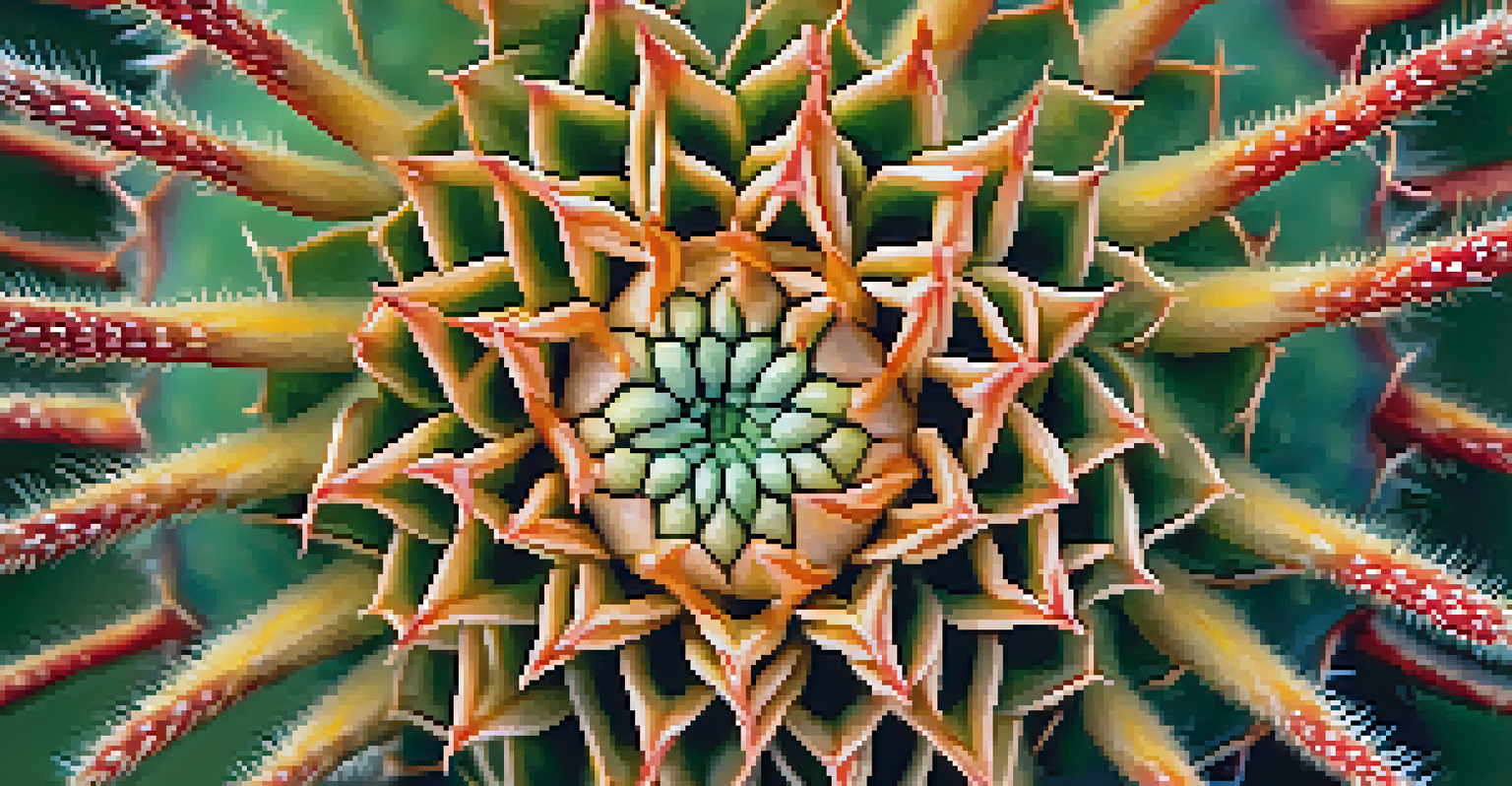Understanding the Healing Aspects of Peyote Ceremonies

What is Peyote and Its Cultural Significance?
Peyote is a small cactus native to Mexico and the southwestern United States, known for its psychoactive properties. It has been used for thousands of years by Indigenous peoples, particularly in religious and healing ceremonies. The significance of Peyote extends beyond its hallucinogenic effects; it plays a crucial role in the spiritual and cultural identity of these communities.
Psychedelics can help people to face their fears, feel their pain, and see the world with fresh eyes.
In these cultures, Peyote is revered not just as a plant, but as a sacred teacher that offers insights into the self and the universe. This deep-rooted relationship highlights the importance of traditional ecological knowledge, where nature and spirituality intertwine. For many, participating in a Peyote ceremony is an opportunity to connect with ancestral wisdom and community.
Understanding the cultural context of Peyote is essential before exploring its healing aspects. Respecting its traditions and purposes can lead to a more profound experience, whether in a ceremonial setting or through personal exploration.
The Role of Peyote in Healing Practices
Peyote ceremonies often serve as a pathway to healing, both physically and emotionally. Participants report profound experiences that can lead to a release of trauma and a deeper understanding of personal challenges. The ritualistic elements of these ceremonies create a safe space for individuals to confront their fears and anxieties.

During the ceremony, the active ingredient in Peyote, mescaline, can induce altered states of consciousness that allow for introspection and emotional catharsis. Many find that these experiences facilitate spiritual growth and personal transformation. By facing inner demons and embracing vulnerability, individuals can emerge with a renewed sense of clarity and purpose.
Peyote's Cultural Importance
Peyote is a sacred cactus used by Indigenous peoples for spiritual and healing purposes, symbolizing a deep connection between nature and spirituality.
Moreover, the communal aspect of Peyote ceremonies fosters a sense of belonging and support. Sharing these experiences with others can enhance the healing process, reminding participants that they are not alone in their struggles.
The Psychological Benefits of Peyote Use
Research indicates that Peyote can have significant psychological benefits, particularly for those dealing with issues like depression, anxiety, and PTSD. The insights gained during a Peyote ceremony can help individuals reframe their perspectives and tackle their mental health challenges with renewed vigor. Many participants describe feelings of interconnectedness and a greater appreciation for life.
The healing comes from the experience of deep connection to oneself, to others, and to the universe.
The process of introspection facilitated by Peyote can lead to breakthroughs in understanding oneself and one's place in the world. These experiences often encourage individuals to develop healthier coping mechanisms and foster resilience. The potential for a positive shift in mindset can be life-changing for many.
However, it's crucial to approach Peyote use with caution and respect. While the benefits are promising, they should be considered within the context of a supportive environment, preferably guided by experienced facilitators who honor the traditions surrounding the plant.
Physical Healing and Peyote's Medicinal Properties
Beyond its psychological effects, Peyote has been studied for its potential physical healing properties. Some research suggests that the compounds found in Peyote may help alleviate pain and reduce inflammation. This aspect of Peyote adds another layer to its healing capabilities, making it a valuable tool in the holistic health landscape.
In many Indigenous communities, Peyote is used to treat various ailments, from headaches to more severe chronic conditions. The holistic approach emphasizes treating the whole person, not just the symptoms. This philosophy aligns with the increasing interest in integrative medicine, which combines conventional and alternative therapies.
Healing Through Peyote Ceremonies
Peyote ceremonies provide a safe space for emotional healing, allowing participants to confront personal challenges and foster a sense of community.
It's important to note that while there are promising findings, more research is needed to fully understand the medicinal potential of Peyote. The use of Peyote for physical ailments should always be approached with care and under professional guidance.
Setting the Right Intention for Peyote Ceremonies
Setting a clear intention before participating in a Peyote ceremony is crucial for maximizing the healing experience. Intentions can range from seeking clarity on personal issues to a desire for spiritual growth. By articulating these intentions, participants can navigate their journeys with purpose and focus.
Intentions act like a guiding star during the ceremony, helping individuals remain grounded while exploring the depths of their consciousness. This focus can help in processing experiences more effectively, allowing for deeper insights and revelations. The practice of intention-setting is common in many spiritual traditions, reinforcing the idea that we shape our experiences with our mindset.
Moreover, sharing intentions with the group can create a sense of unity and collective energy. This communal aspect fosters a supportive atmosphere that can enhance the overall healing experience, making it more profound and transformative.
The Importance of Experienced Guides in Ceremonies
When engaging in Peyote ceremonies, having experienced guides is essential. These facilitators understand the intricate dynamics of the ceremony and can create a safe, nurturing environment for participants. Their knowledge of the plant, its effects, and the cultural context helps ensure that the ceremony remains respectful and meaningful.
Experienced guides can help participants navigate challenging moments during their journeys, offering support and reassurance when needed. Their presence can also help maintain the ceremonial integrity, ensuring that the practices align with traditional values. This guidance is particularly important for those who may be new to Peyote or altered states of consciousness.
Guidance Enhances Peyote Experiences
Experienced guides are essential in Peyote ceremonies, ensuring a respectful environment that supports participants' journeys and cultural integrity.
Ultimately, the role of a guide is to foster a space where healing and transformation can occur. Their expertise not only enhances the experience but also deepens the connection to the cultural roots of Peyote use.
Integrating Peyote Experiences into Everyday Life
After participating in a Peyote ceremony, integrating the insights gained into daily life is crucial for lasting change. Many individuals find that their experiences can illuminate paths to personal growth and improved well-being. Reflecting on the lessons learned during the ceremony can help solidify these insights and encourage ongoing self-discovery.
Practices such as journaling, meditation, or discussing experiences with trusted friends can aid in this integration process. These activities allow individuals to process their experiences further and apply their newfound knowledge in practical ways. The goal is to carry the healing aspects of the ceremony into everyday interactions and decisions.

Furthermore, cultivating a supportive community can enhance this integration. Sharing experiences and insights with others who have undergone similar journeys can create a network of understanding and encouragement. Together, participants can continue to grow and heal long after the ceremony has ended.